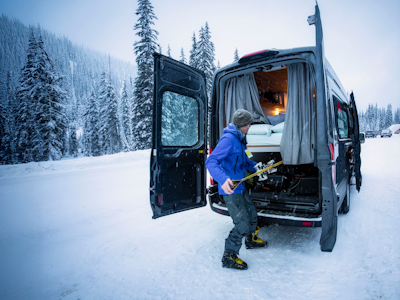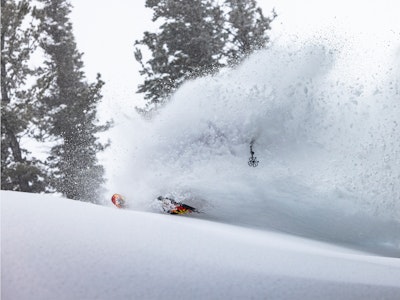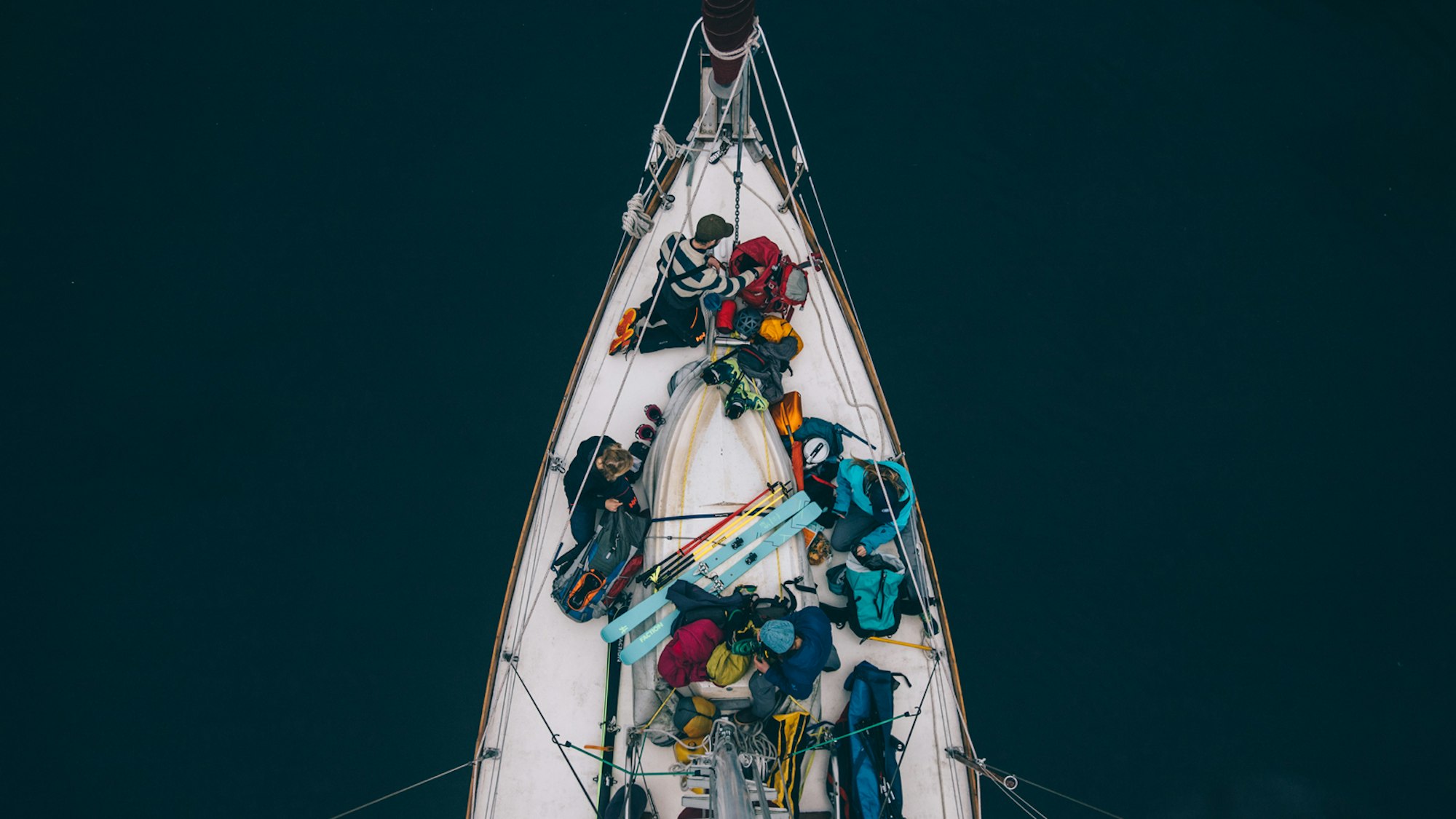How an eight-day search for untracked corn became the adventure of a lifetime
WORDS & PHOTOS • ANDY COCHRANE
The engine began to sputter and seconds later gave out, a whimper that quickly faded into silence. Our motley crew of eight was marooned, drifting aimlessly off the shores of Vancouver Island. We radioed in “securité,” checked the charts for potential hazards and opened up the engine bay. There was nothing we could do but figure it out on our own. Morale was low at that point—when you’re dreaming of skiing steep lines on glacial peaks, the last thing you want is engine trouble on your way there.
Fortunately, thanks to the help of a few YouTube tutorials about diesel repair and a friendly, local Yugoslavian mechanic named Joe, we were able to fix the motor and continue on, making this just an episode in a bigger, better story. An hour and a half later we cleared the air in the fuel line, replaced a few quarts of leaking oil and fired up the grumbly diesel engine. We had another two days and 120 nautical miles of sailing to reach our destination, a fjord tucked deep into the British Columbia coastline, known as Princess Louisa.
This trip was born three months earlier, when my good friend Ben Doerr and I shut down his local pub and persuaded the bartender to let us stay for another round. It was one of those nights that I remember only because of the wild idea that came from it. We traded stories of work and family, then spent most of our energy discussing the logistics of a sail-to-ski trip to British Columbia, a dream we’d joked about for a few years, but never put serious thought into.
Convincing each other that April was prime time for such a trip, we sketched a list of gear we’d need, a crew wiley enough to pull it off and a route that his boat and my ski knowledge could tackle. From there all we had to do was hustle, making calls and shooting off emails to assemble the pieces.
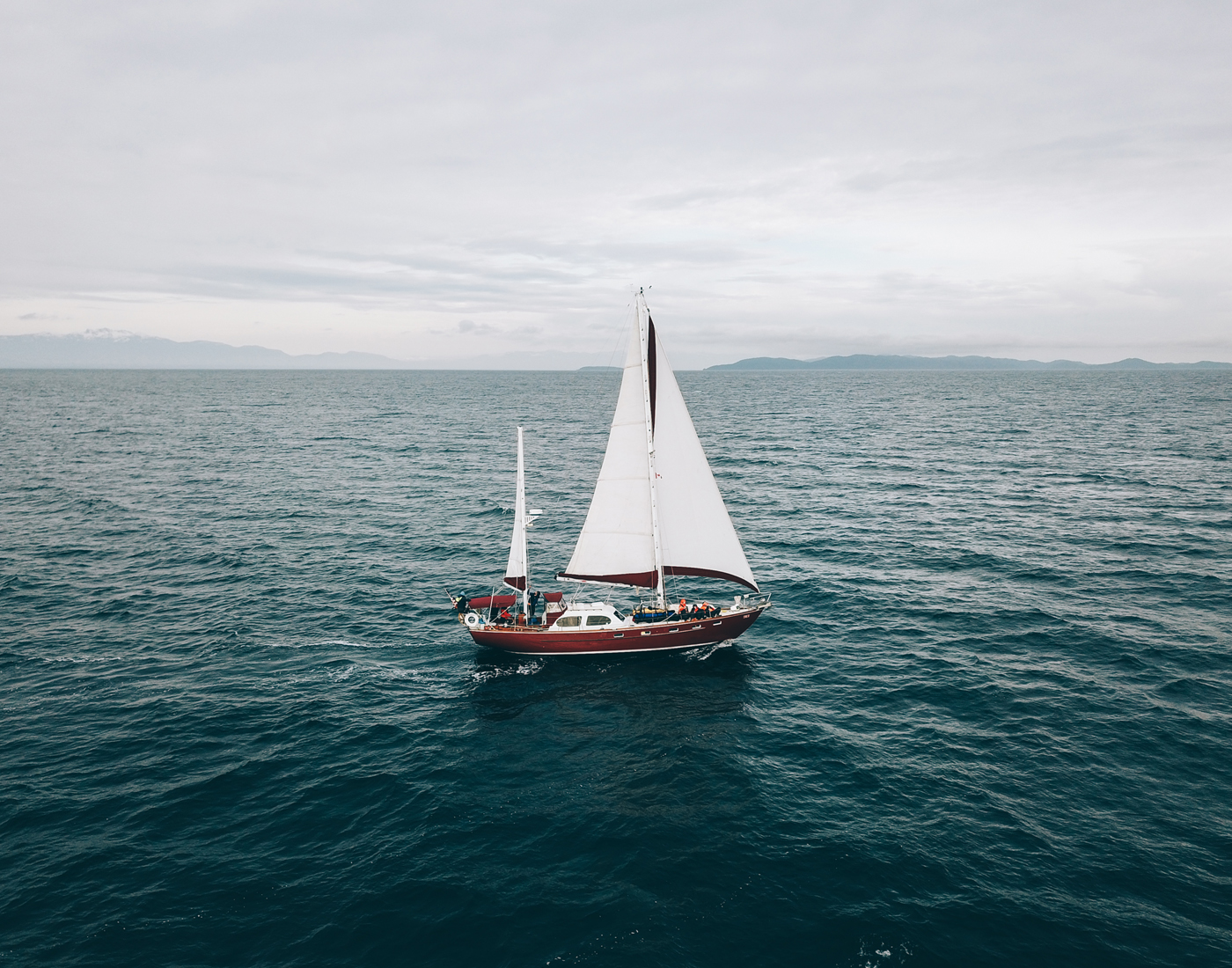
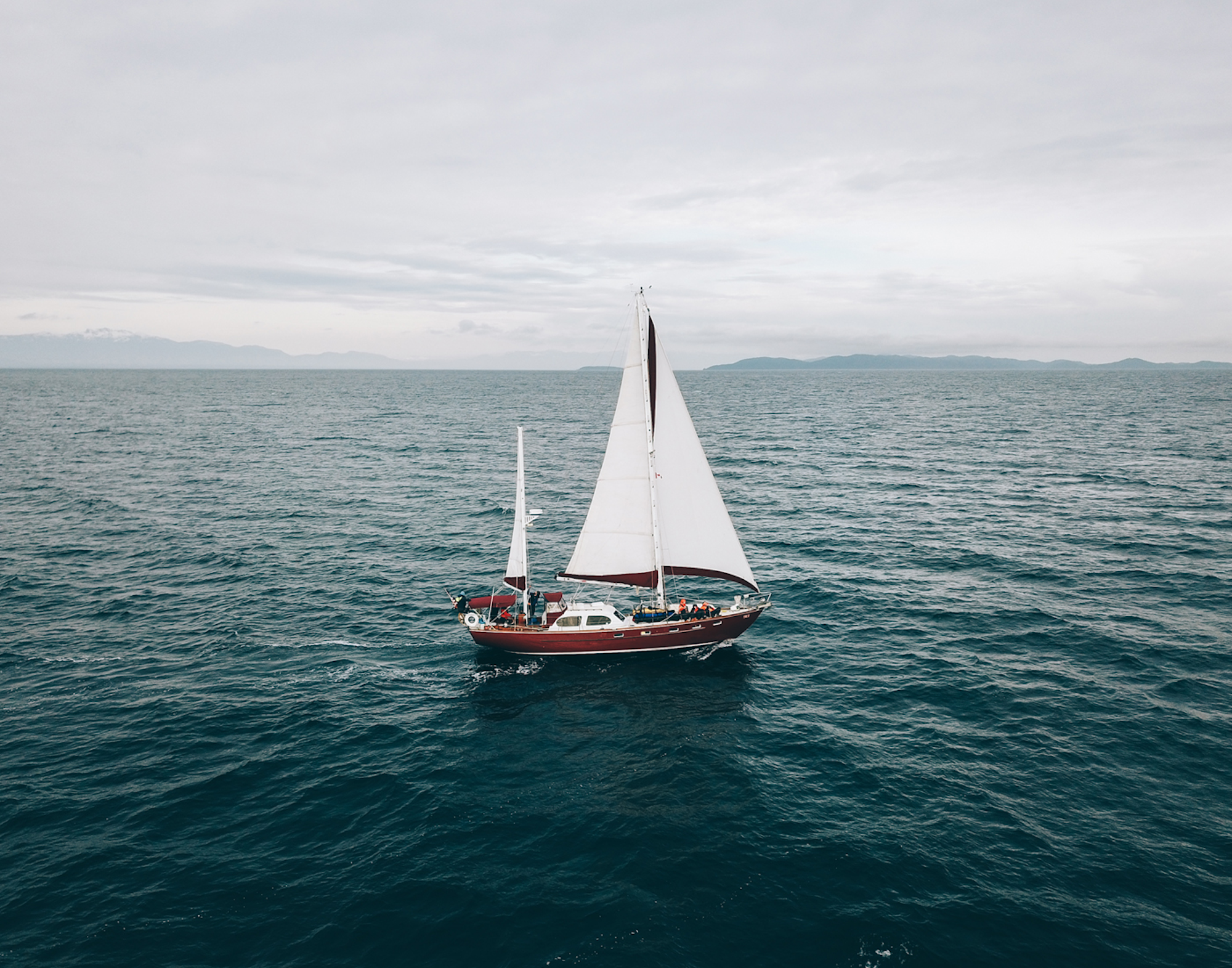
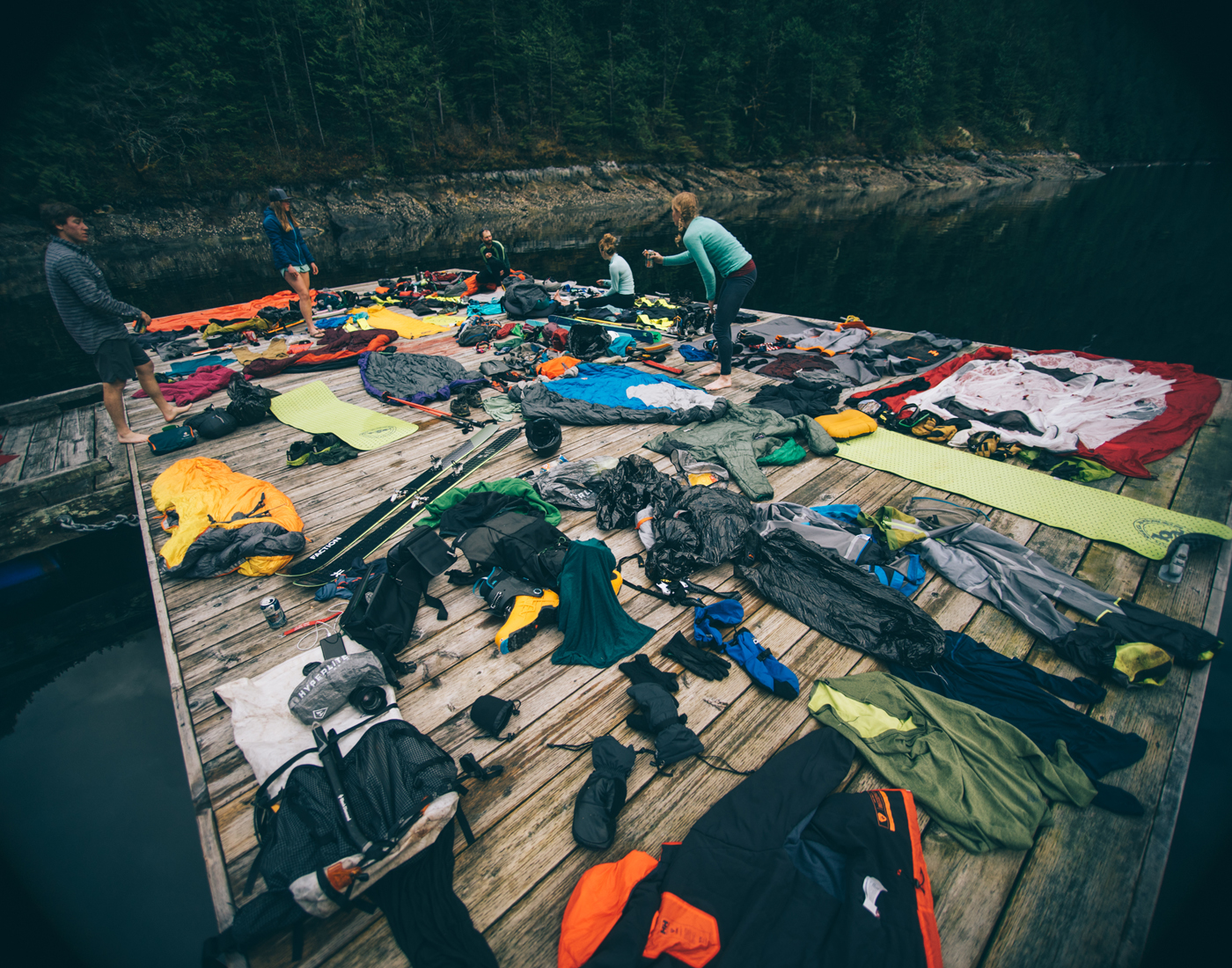
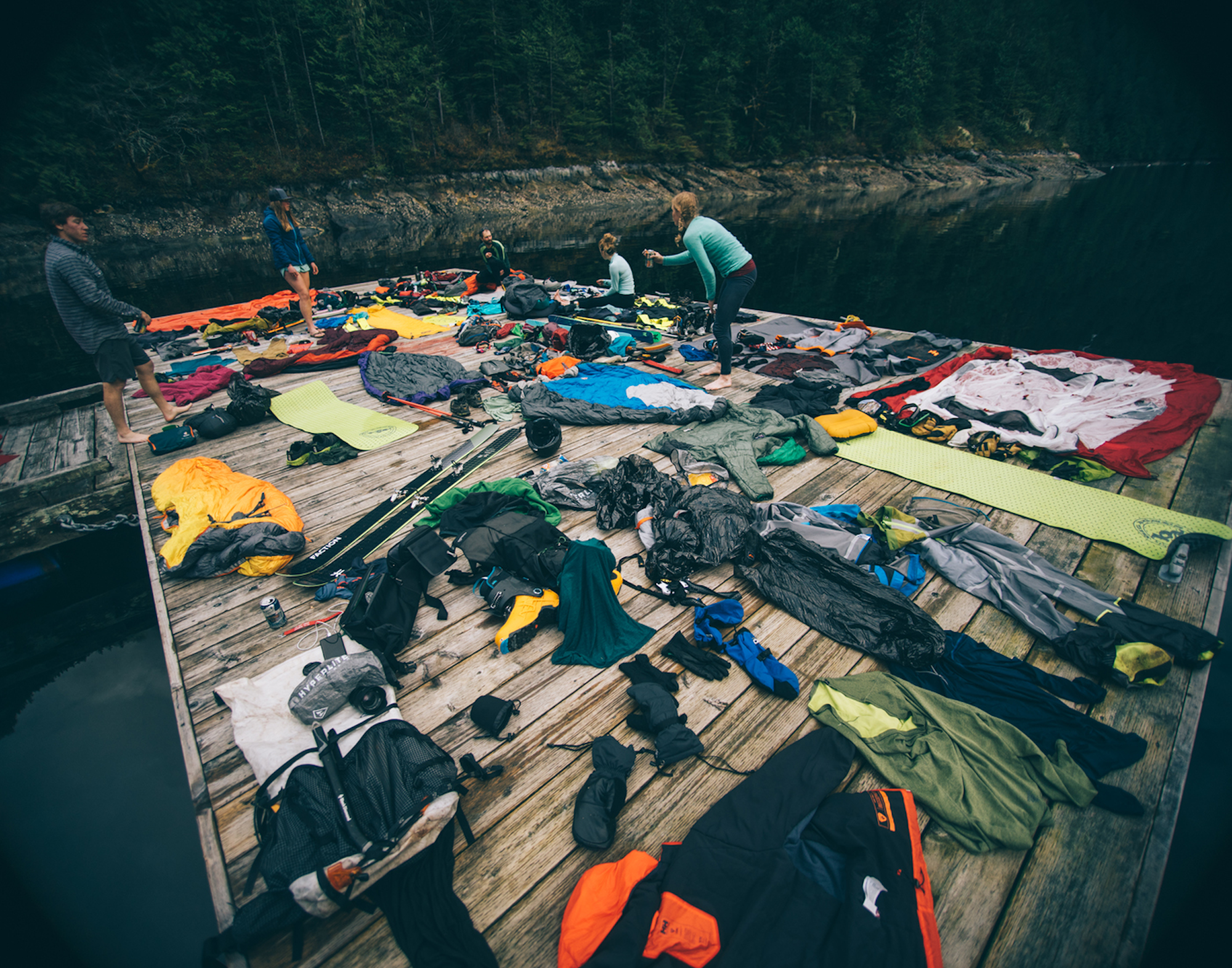
Fast forward to April. It took us the good part of a morning to stash all of the gear onboard, including a week’s worth of food and water, eight pairs of skis, winter camping, glacial travel and offshore sailing gear and enough liquor to supply a big, fat Greek wedding. Eventually, we found space for all of it on True, a 44-foot ketch captained by Ben. The two of us met three years ago on a kayak and sailing trip in the San Juan Islands, but this was our biggest endeavor yet.
Around noon we pushed off from the docks and pointed north, leaving the home port of Bainbridge Island towards Canada. We had timed our trip with tides and favorable wind and began navigating toward a consensus bad idea: sailing across an international border, hiking up a steep, overgrown rainforest and praying for snow.
The boat was loaded to the brim, but despite feeling like sardines in a confined space, we found a rhythm quickly. Sune Tamm, a Brit living in Iceland and working in Antarctica, became the comedic heartbeat. Kaylin Richardson, two-time Olympian, and Hannah McGowan, Denali guide and Taos ski patroller, added valuable expedition experience. Jenna and Sam Ovett, a couple from Colorado, helped fill gaps. Wyatt Roscoe, my go-to ski partner and Jackson native, made sure I didn’t get into too much trouble.
Despite the delay due to engine trouble, we reached Nanaimo on time, clearing customs and grabbing fish tacos at a small shop on the docks. We spent the night there sleeping on the deck for a chance to see stars in the night sky. The weather was calm and our outlook for the morning was suspiciously optimistic.
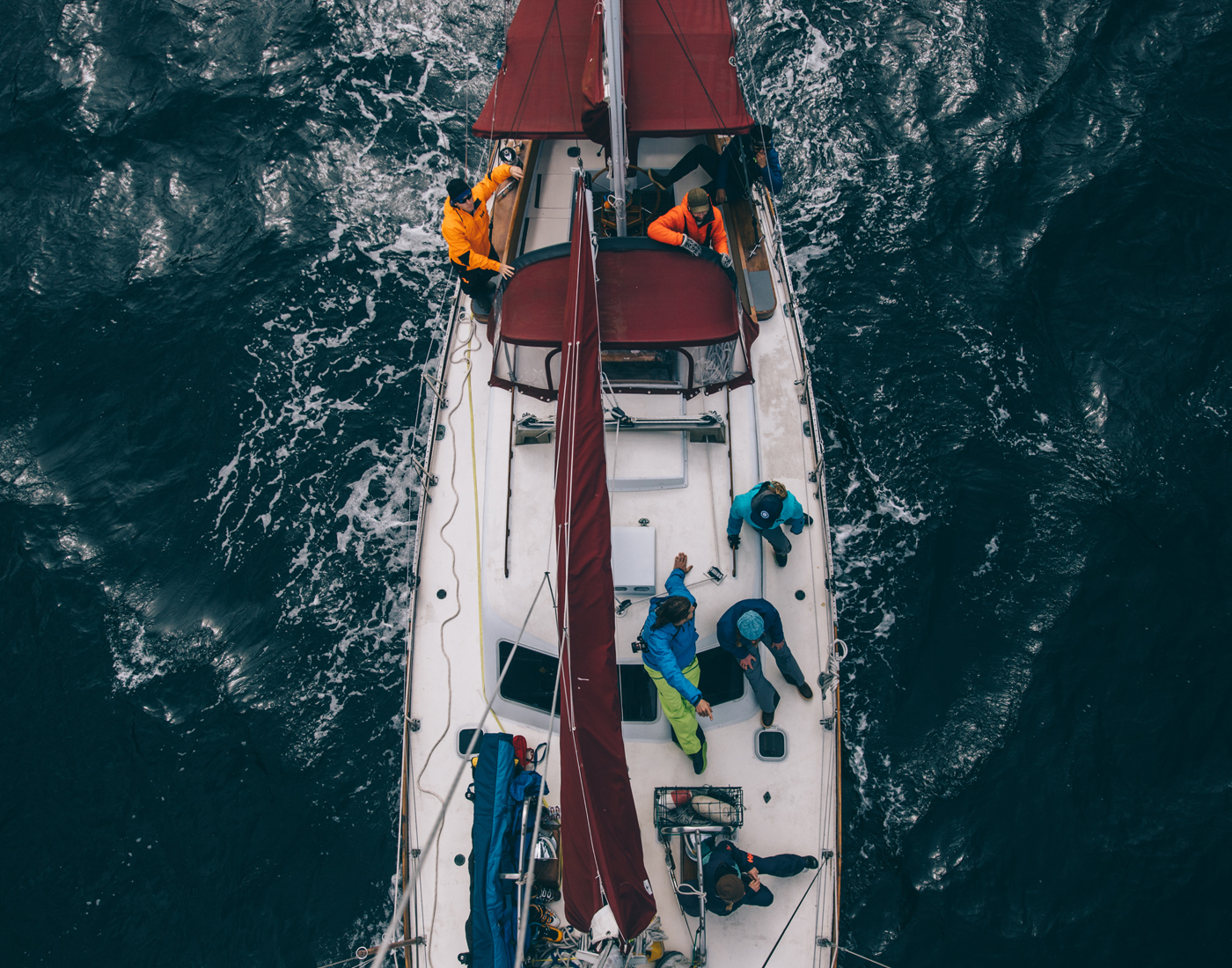
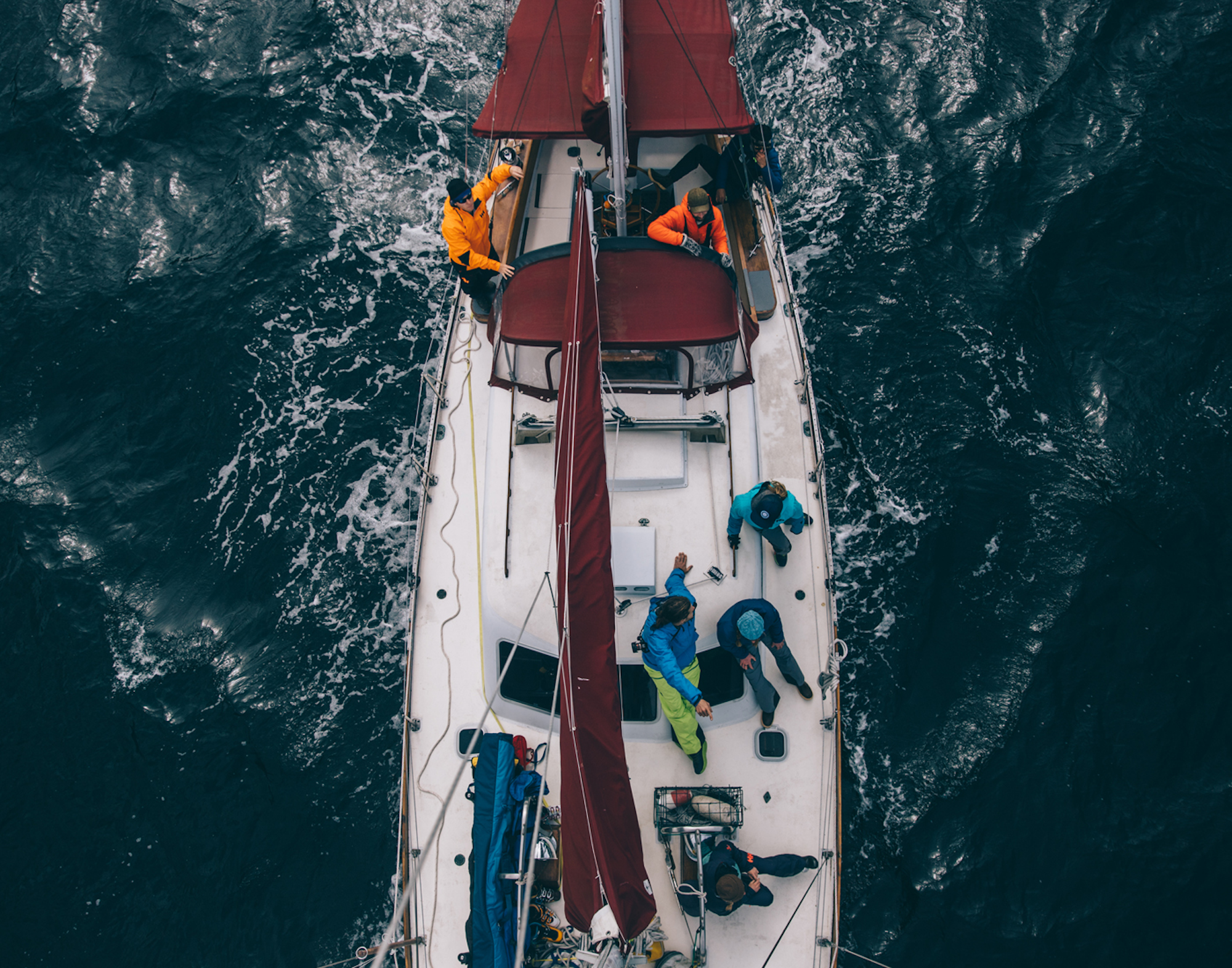
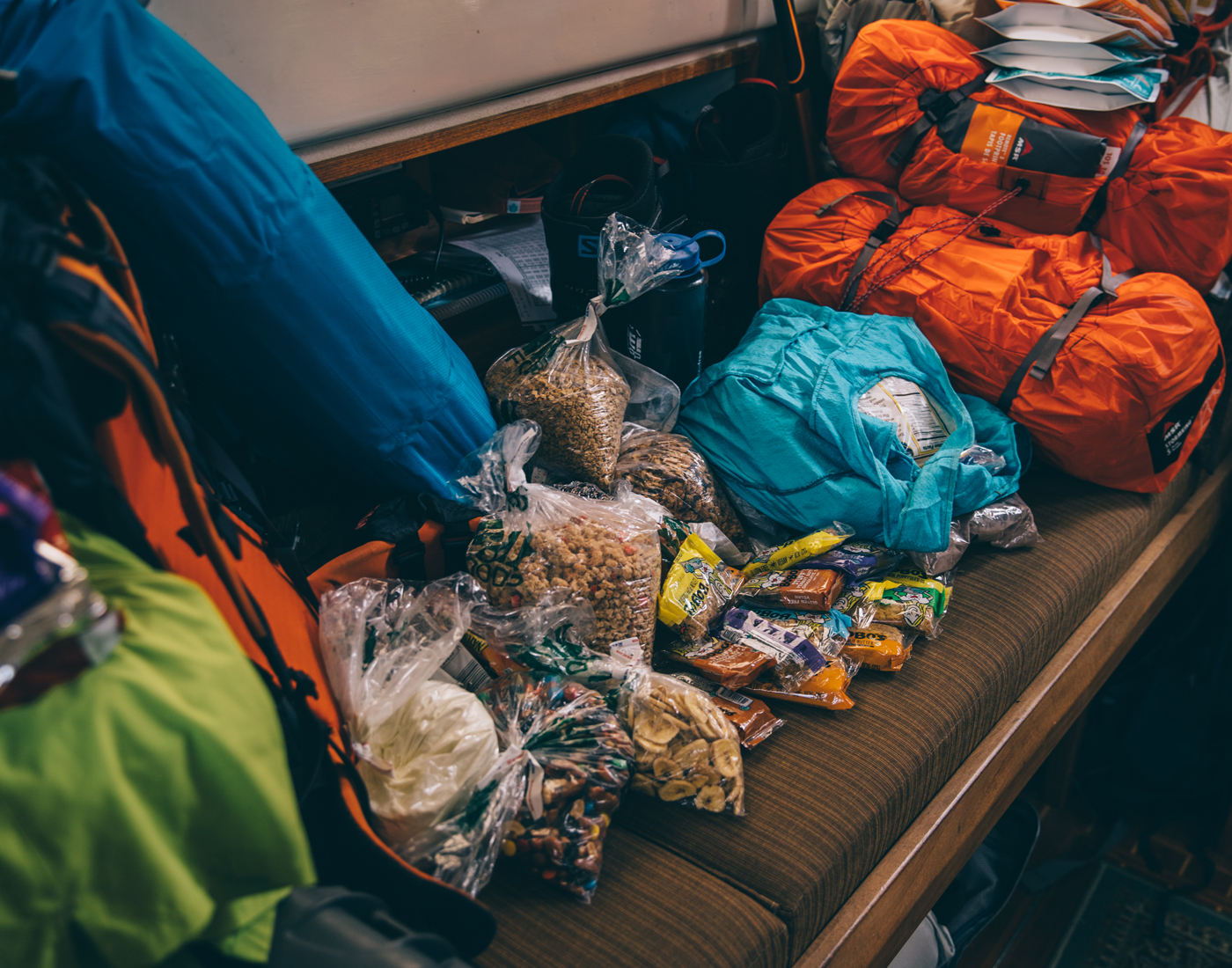
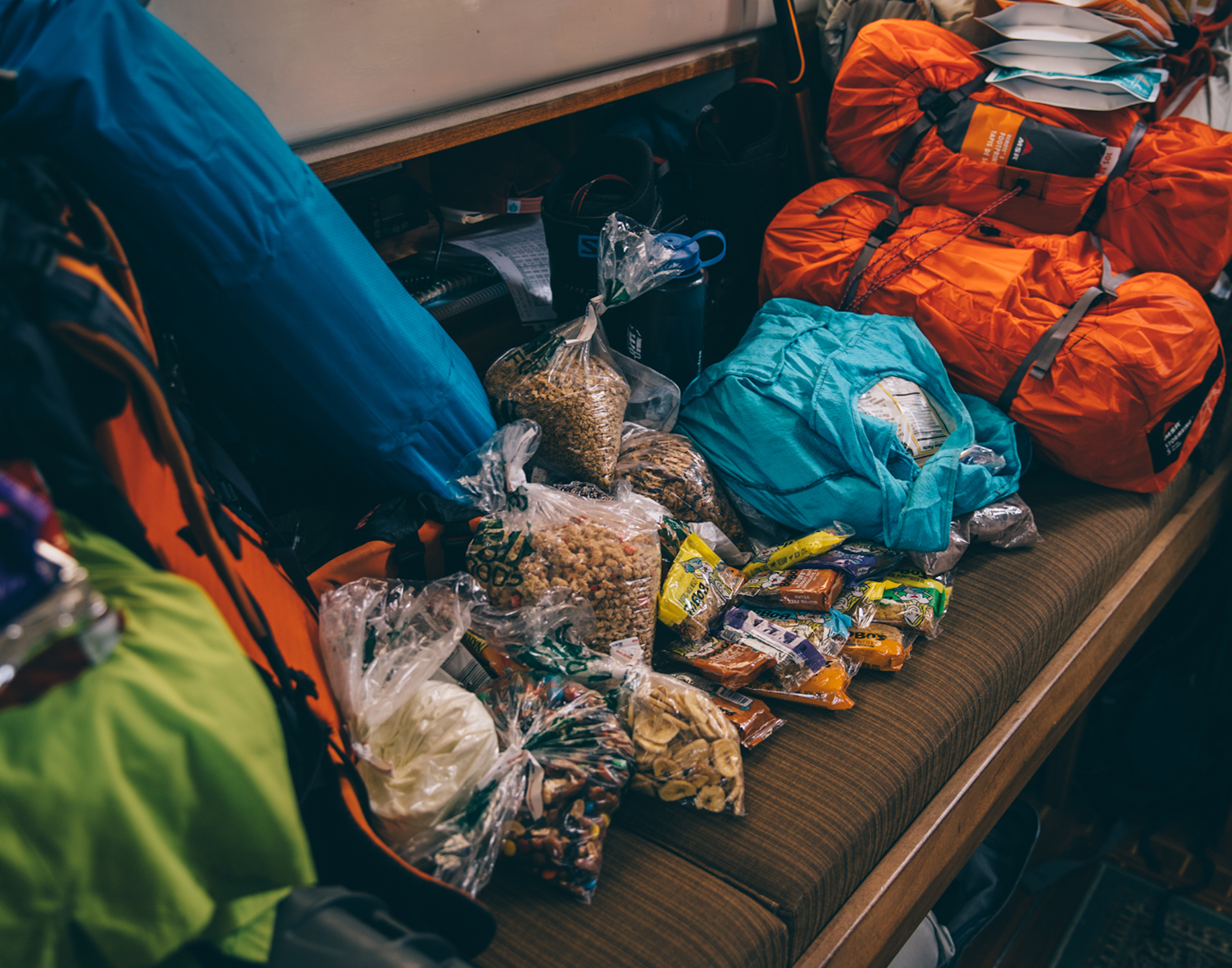
In front of us was the most challenging crossing of the trip, the Strait of Georgia, a notoriously fickle body of water with a massive north-south fetch. Fortunately, the forecast held and we caught a steady 15-kilometer wind off our starboard stern, allowing us to sail the 35 nautical miles across and easily reach the Coast Range by early afternoon.[/vc_column_text][/vc_column][/vc_row][vc_row][vc_column][vc_column_text]That evening we floated through Malibu Rapids–a tidal flow that can rage at over 17 km/h during a storm surge–and into Princess Louisa, just as the sun set. Our dream was becoming reality, despite heavy rain and a rising freezing line projected for the next few days. But that night the weather didn’t matter. We had reached the dock at Chatterbox Falls, giving us access to the nearby peaks. Whatever came our way was out of our control–tonight we’d celebrate with a dram of whiskey and long-winded toasts.
We woke early to rain and packed up quickly. The hiking trail from the dock was well groomed for only a hundred yards, then faded into a poorly-flagged maze of down trees, thick undergrowth and endless mud. We followed it uphill, crawling almost as much as we walked, with skis strapped to our packs. I carried a pair of the updated Agents from Faction, ideal for spring skiing and light enough to not complain about on the climb.
The rain never let up, but I stayed dry thanks to burly rain gear, layered on top of a puffy and wool baselayers. Eventually my hands started to freeze and some of my gear in my pack started to get wet, as water permeated the water-resistant lining. Others in the group had the same issue, but our collective energy stayed high. Tomorrow, we were going to ski—hell or high water.
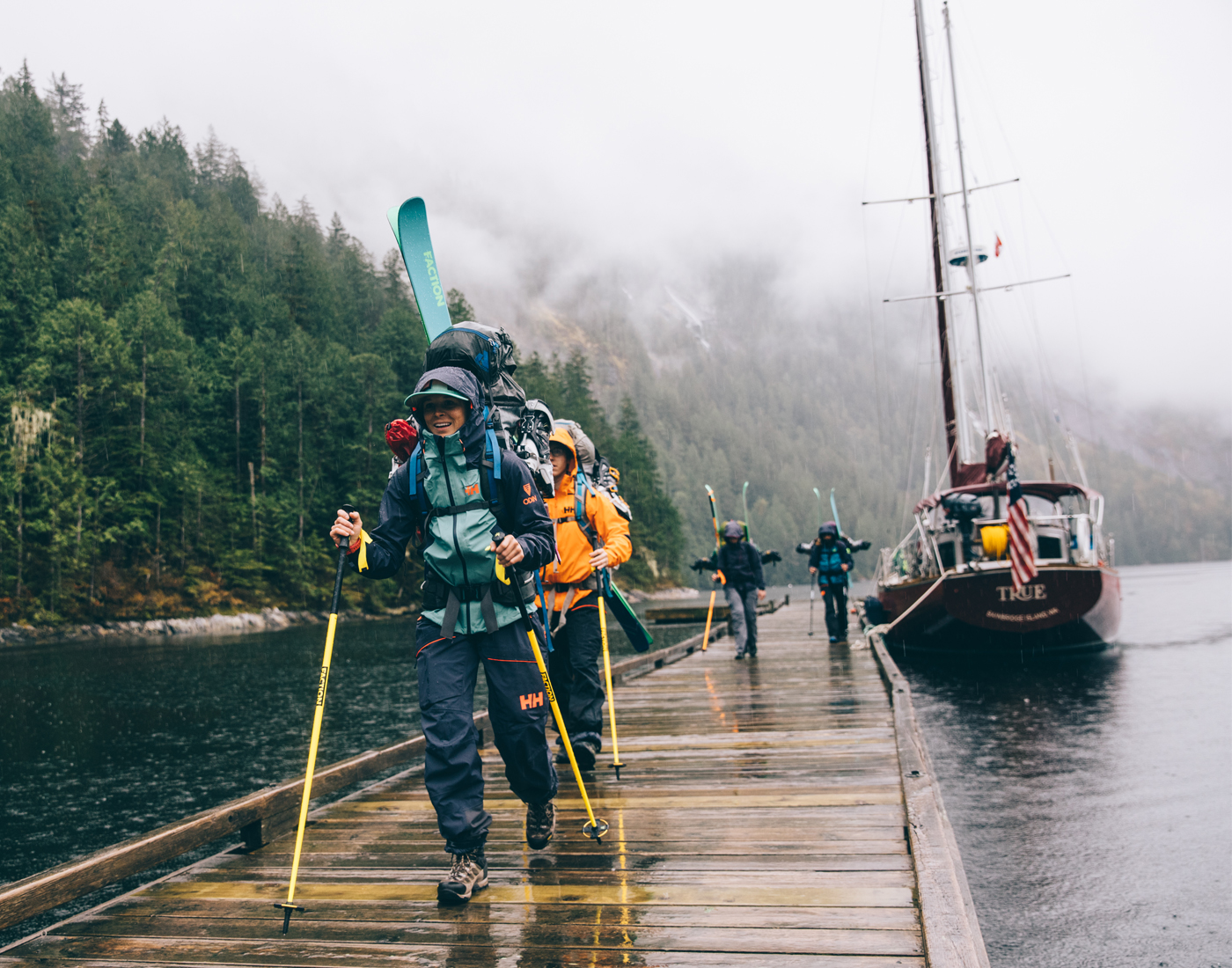
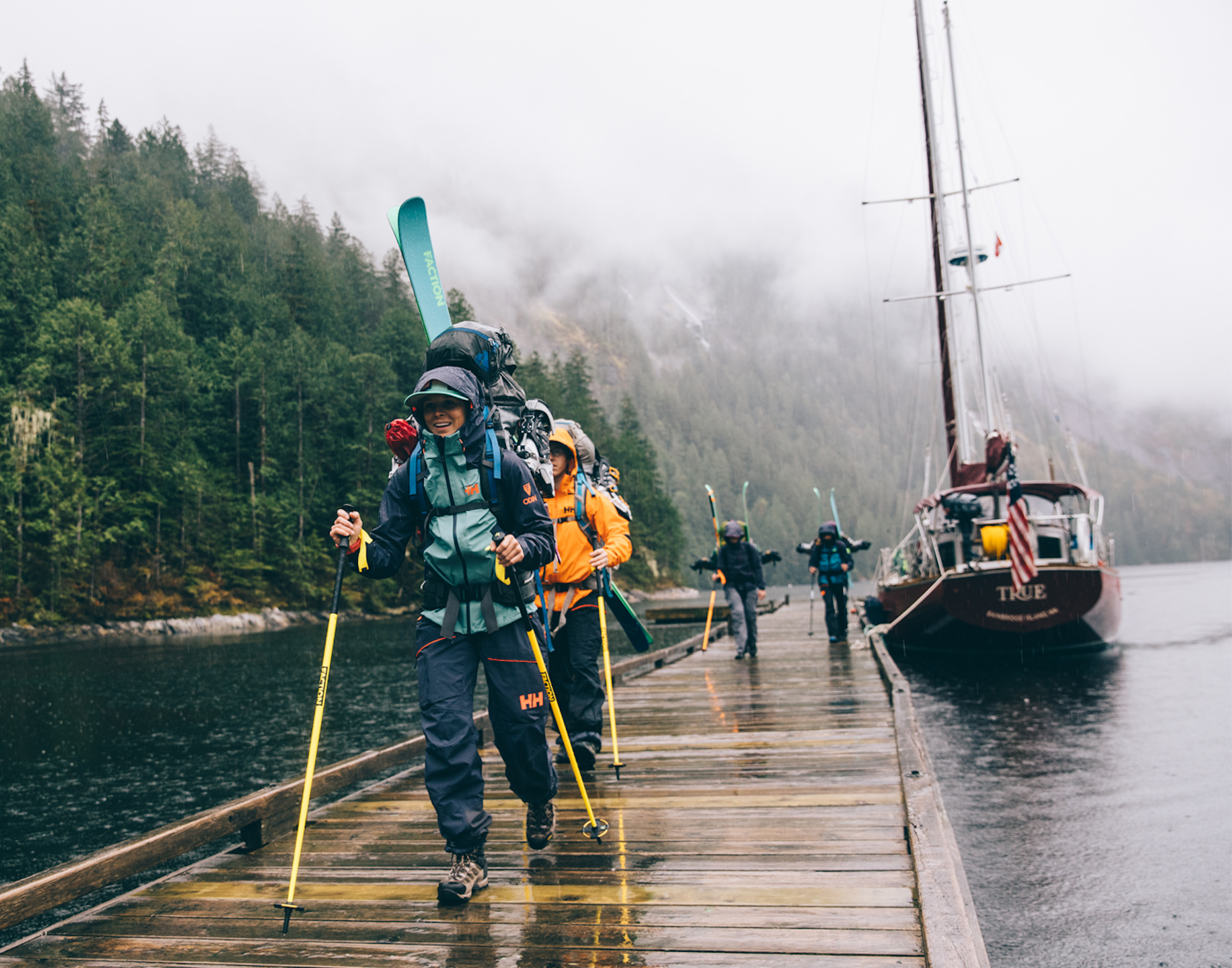
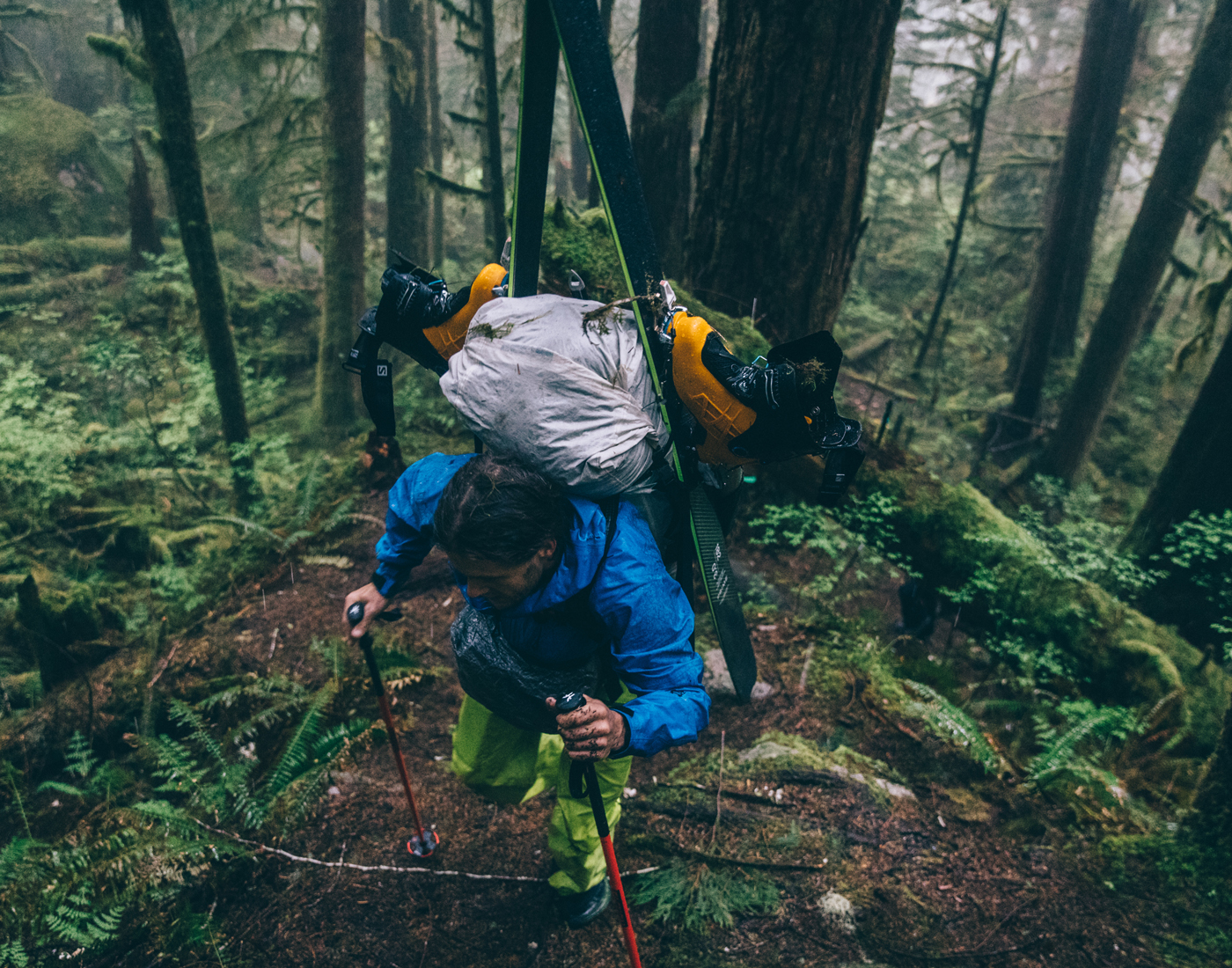
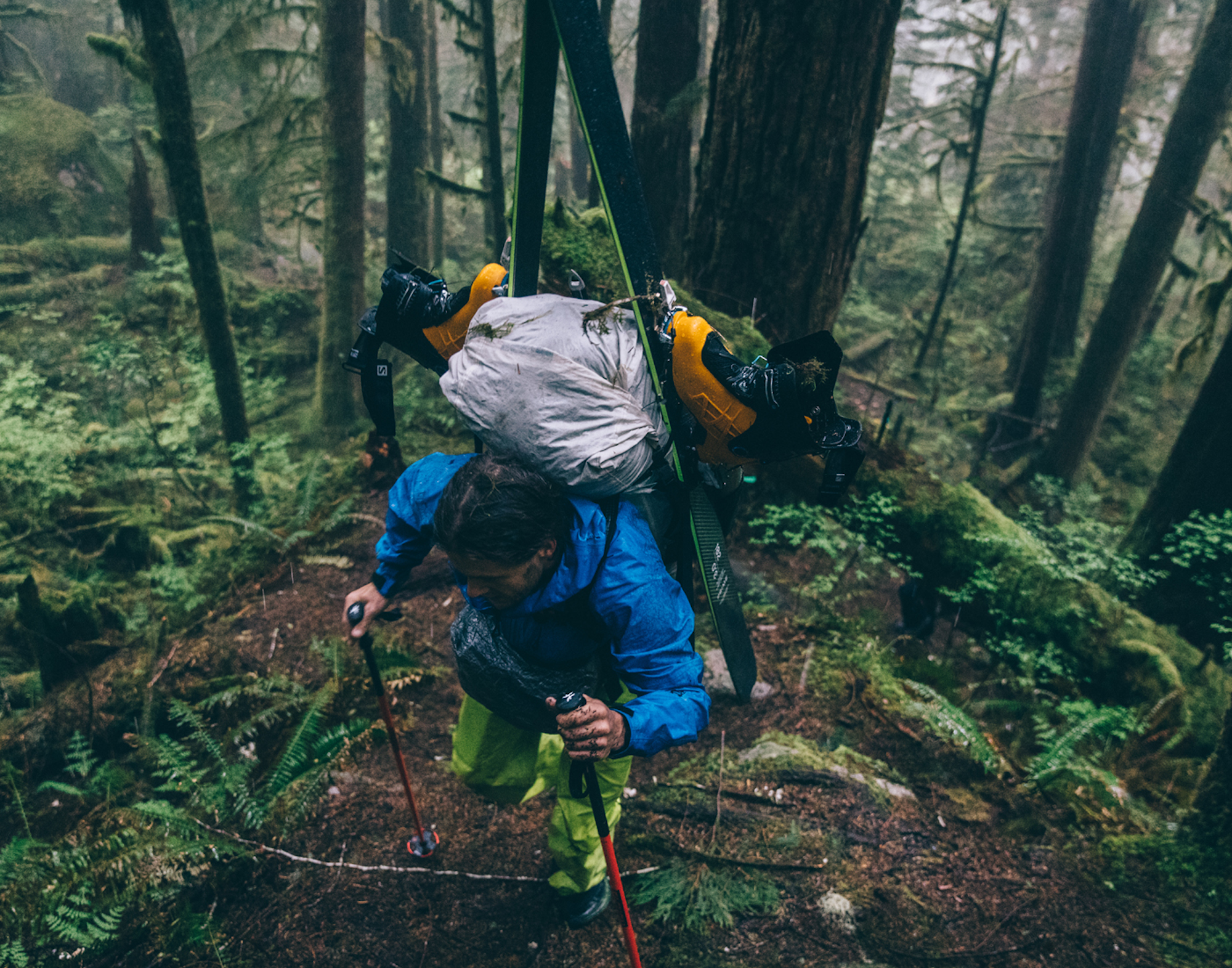
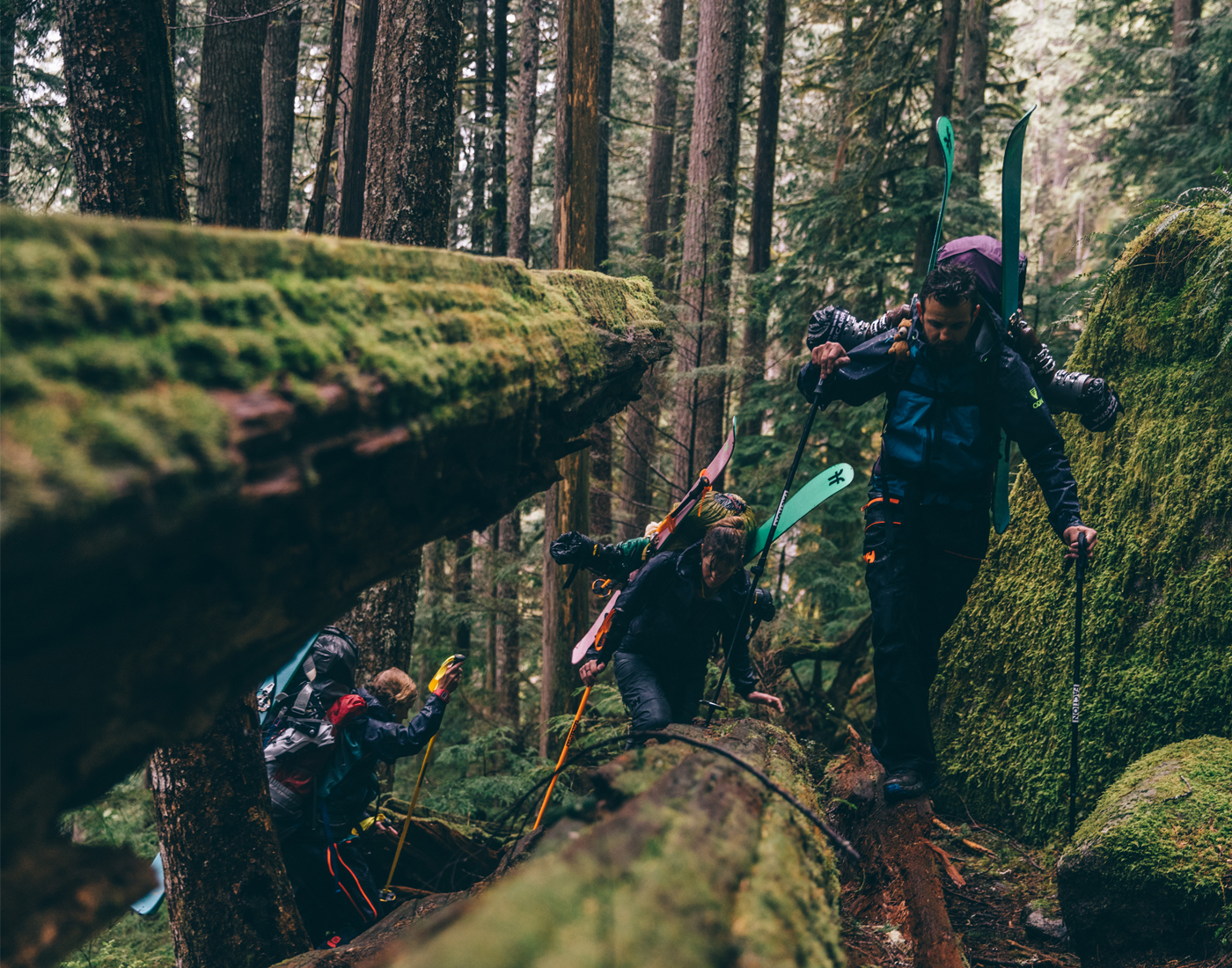
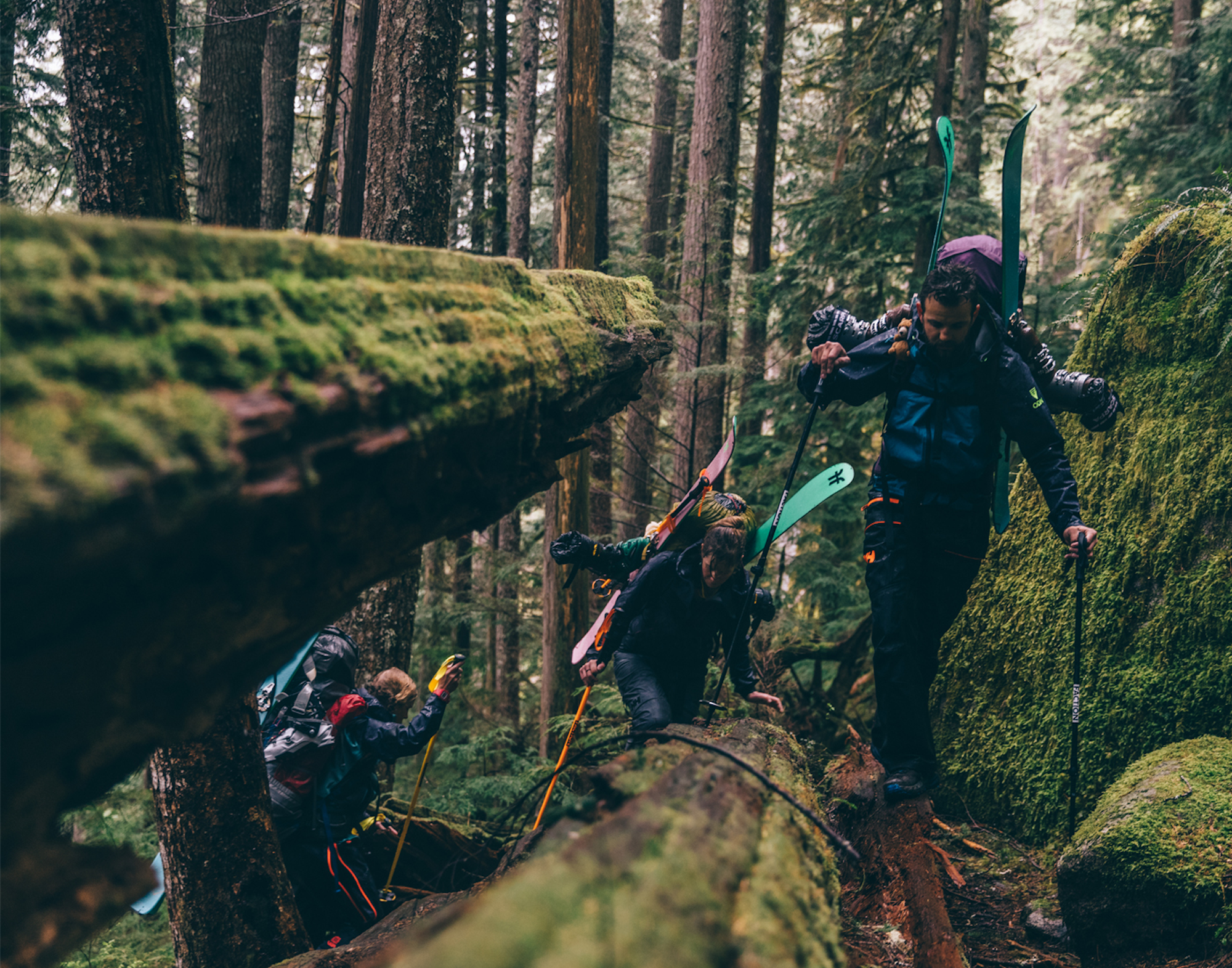
Our biggest ski mission of the trip was an uphill slog that lasted the better part of a day, slowed by stream crossings and abrupt trail endings. When we reached the first patch of snow early afternoon the howling wind began. From there it was a 2,000-foot skin to basecamp and a warm dinner inside our tent. Winter camping in wet conditions can be dangerous without the right gear, but within the walls of our burly expedition tent, we lounged in t-shirts and examined maps with possible lines for the next day.
Our reward for all the work was admittedly mediocre conditions. Poor visibility mitigated a summit bid of Sun Peak, our main objective, and heavy snow at lower elevations made skiing feel more like lunges in a weight room than a springtime corn harvest. Still, it was easy to forget all of that because we were skiing 6,000 feet above our sailboat, which was floating somewhere below on the Pacific Ocean. With in-and-out views of the mountains around us and rainforest below us, skiing on the long flanks of Sun Peak is something I’ll never forget.
We lapped a few runs, climbing as high as visibility would allow, then transitioned and descended big rolling steps downhill. The group, all adept in variable conditions, farmed big faces quickly with eight sets of squiggles. The weather refused to improve over two days, so we stayed locked in the forest, exploring lower-angle faces, staying safe from a concern of avy potential after a wet and heavy storm.
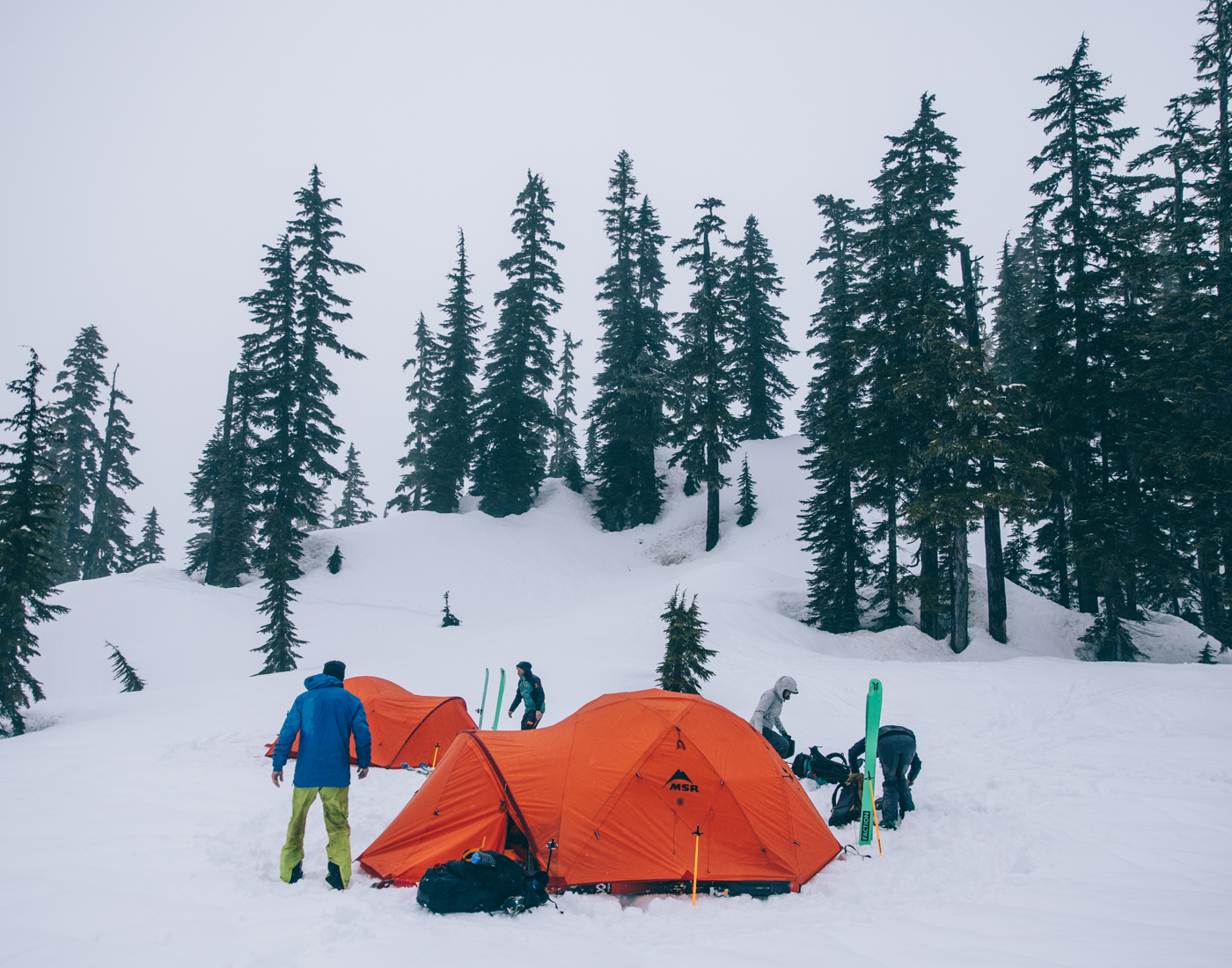
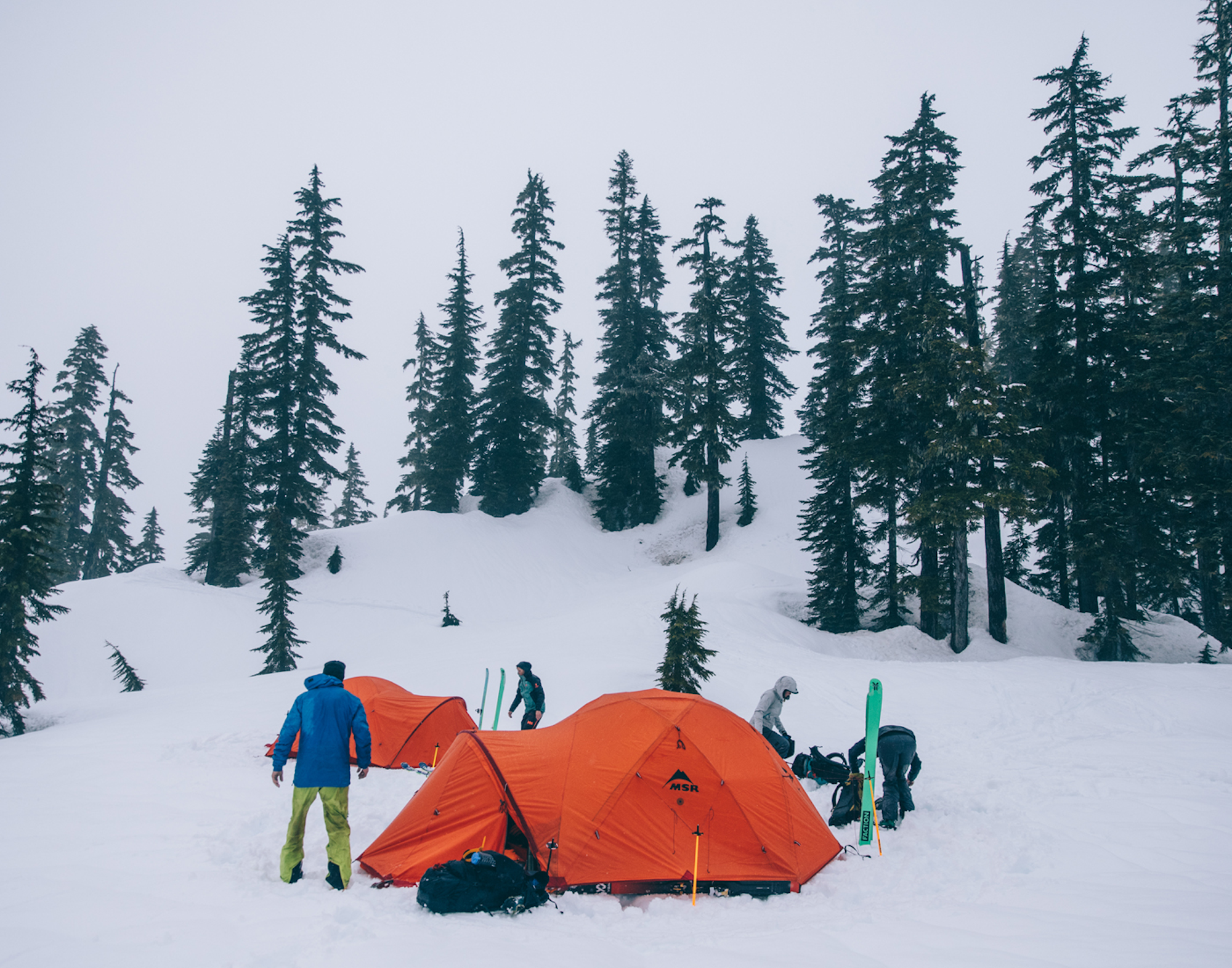
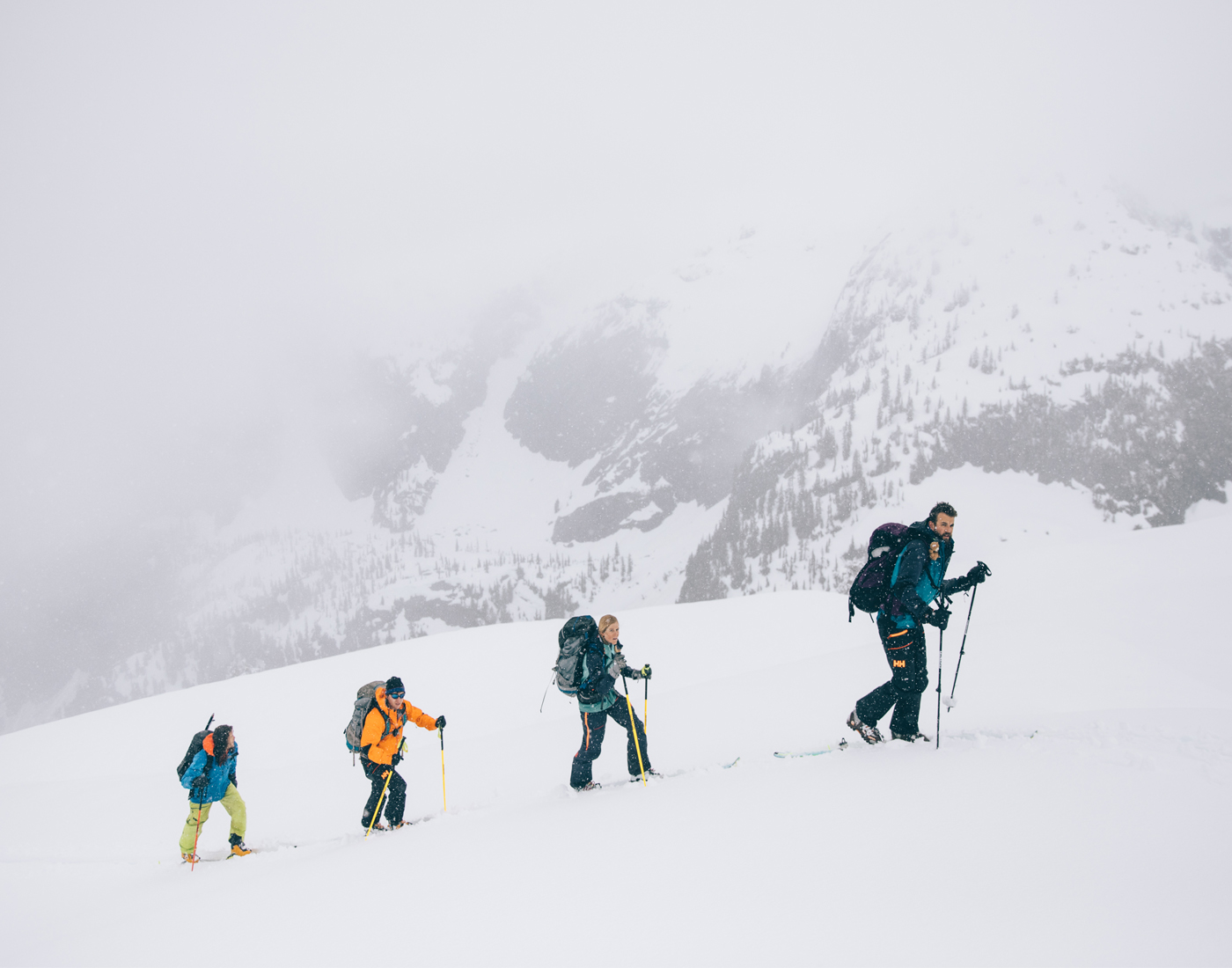
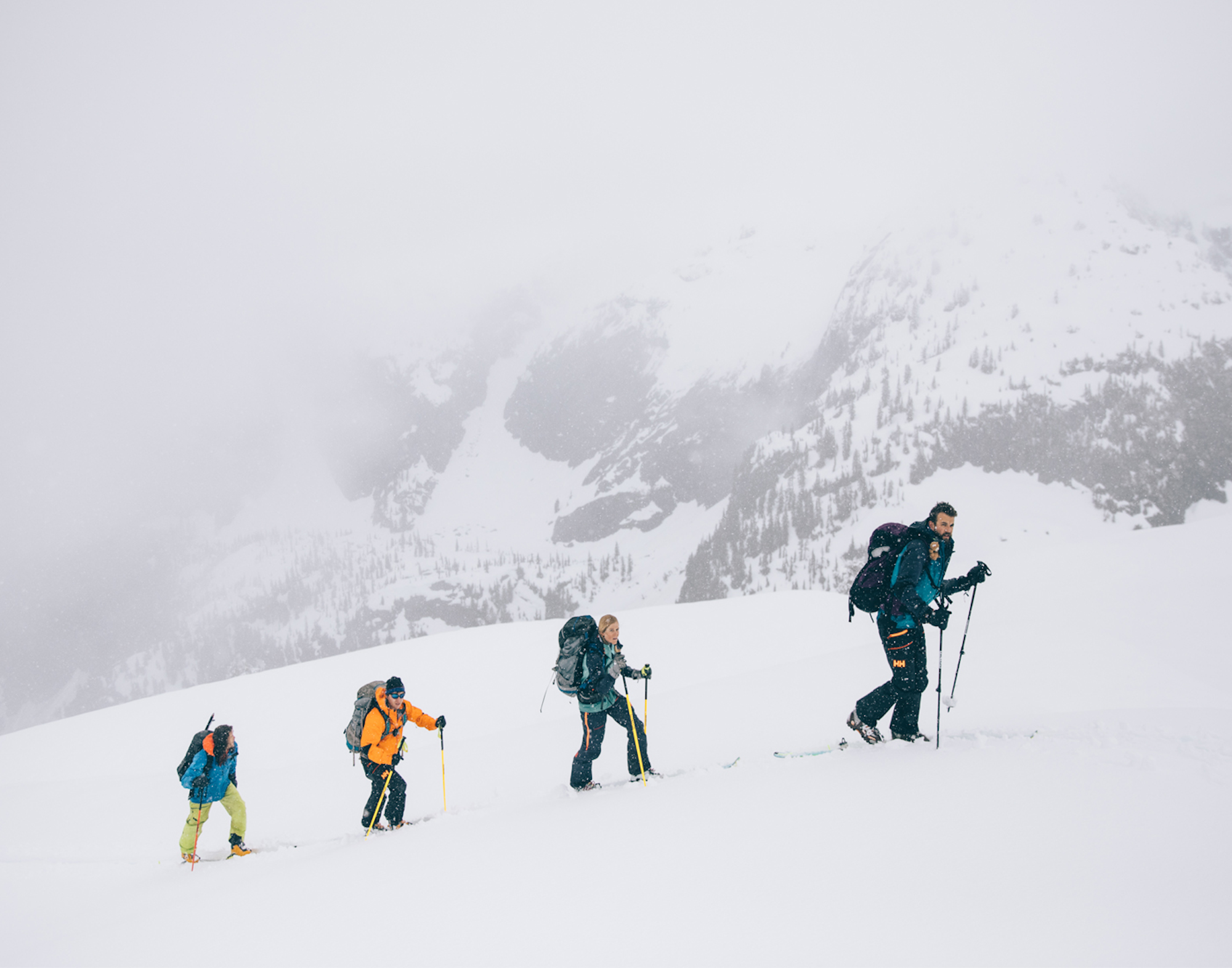
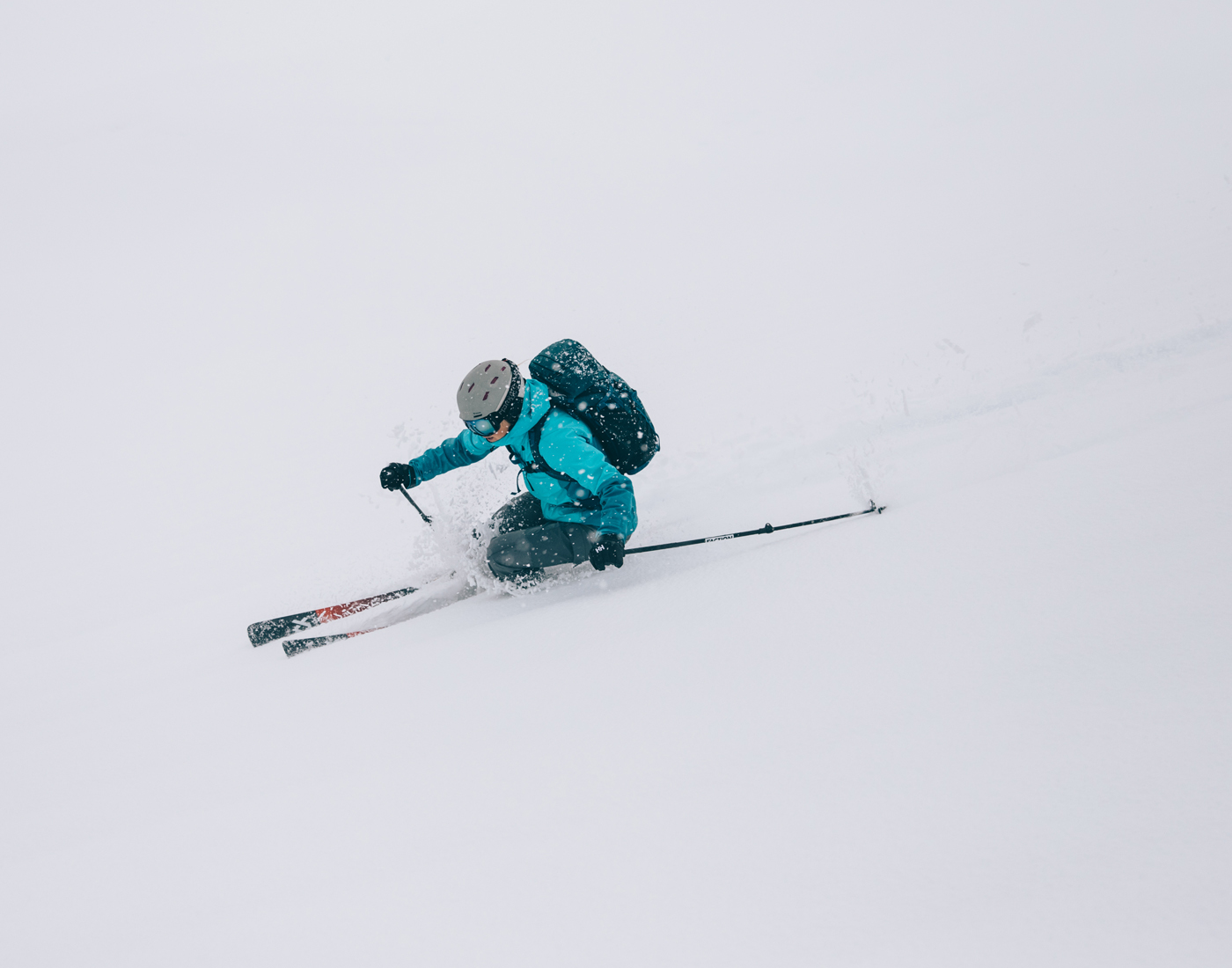
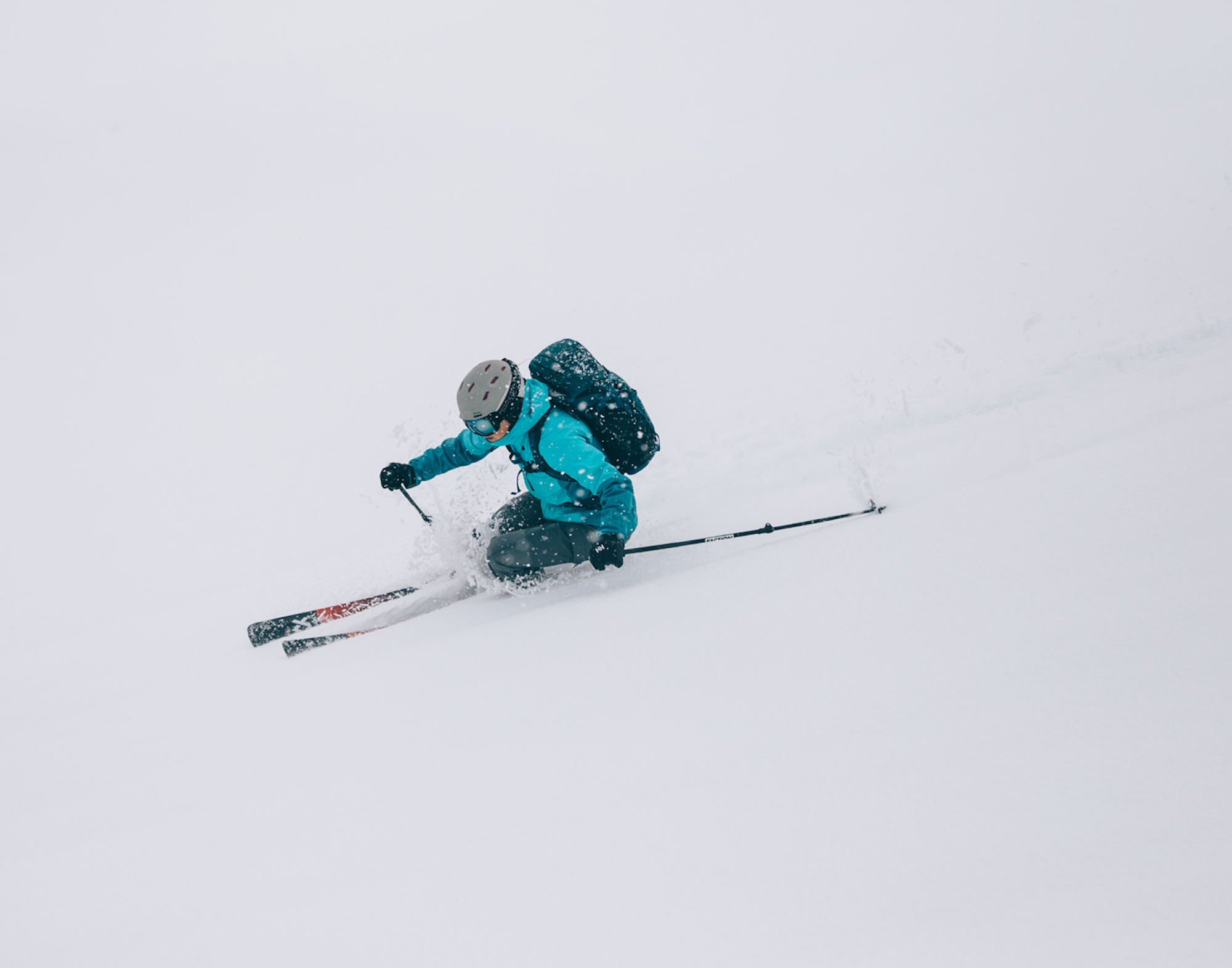
Eventually the rain and sleet turned to snow, and the slopes began to refresh with powder and the skiing improved, but with only a morning left we didn’t have the time to chase a bigger objective. I was more than content with the turns we did get and felt no desire at the tail end of the season to push the line.
Halfway through a long skin I stopped to catch my breath and reflect on how we got here. I watched the rest of the group work their way up towards me, shuffling skis in unison and bantering loudly. All I could do was let out a big yell. Despite more than a few hurdles we had made the dream a reality, and at that moment were skiing on the coastal peaks of British Columbia. Lucky barely begins to describe how I felt.
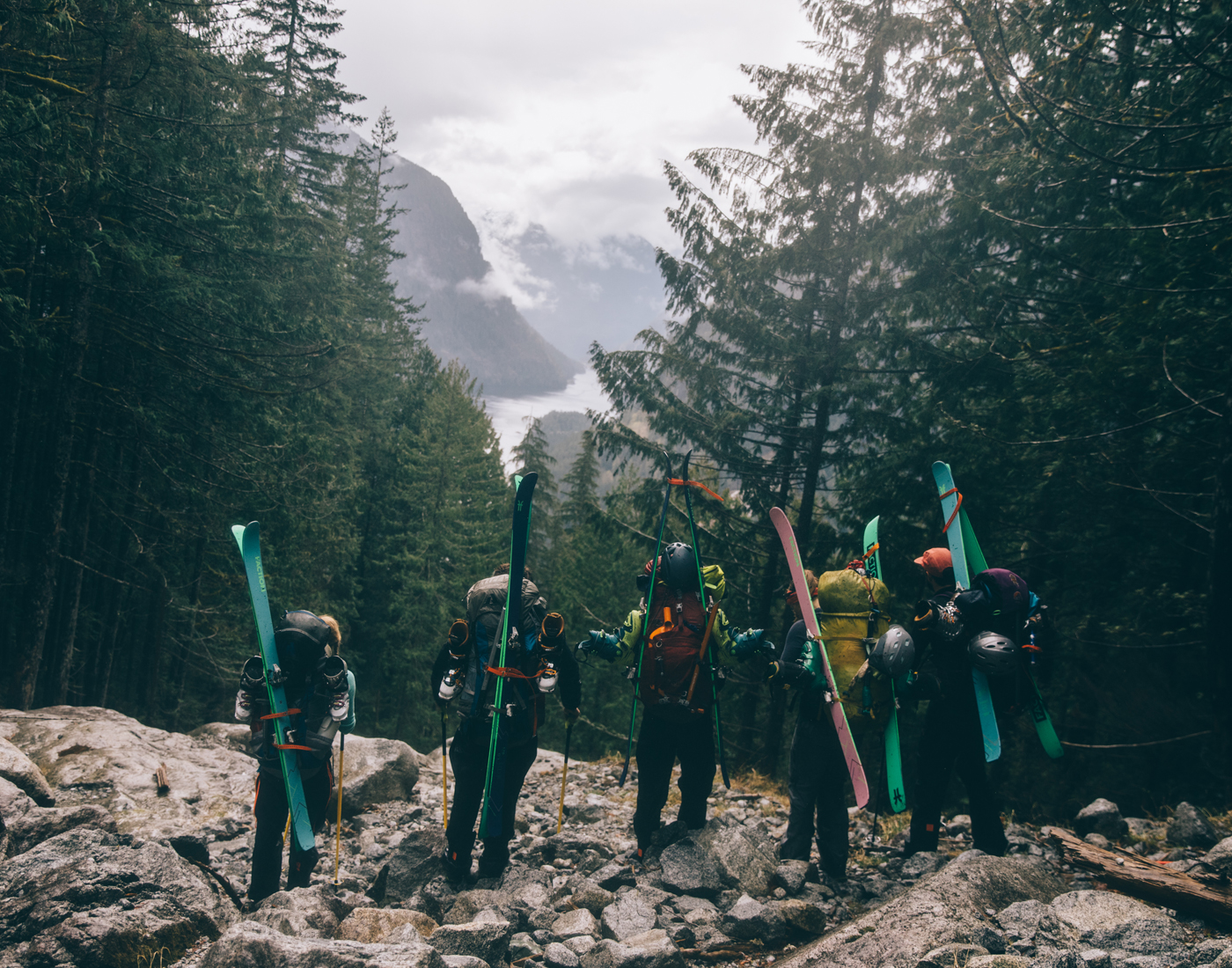
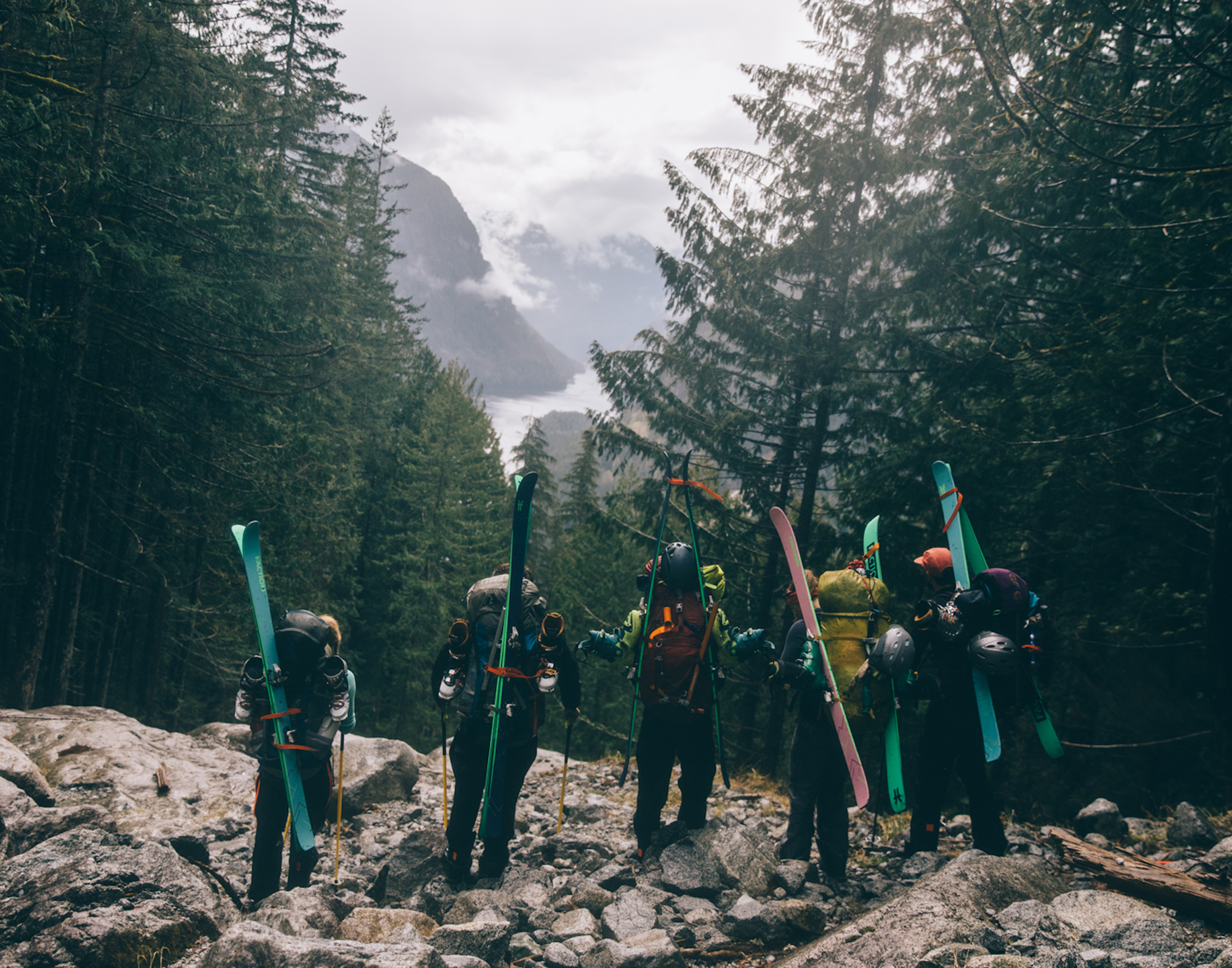

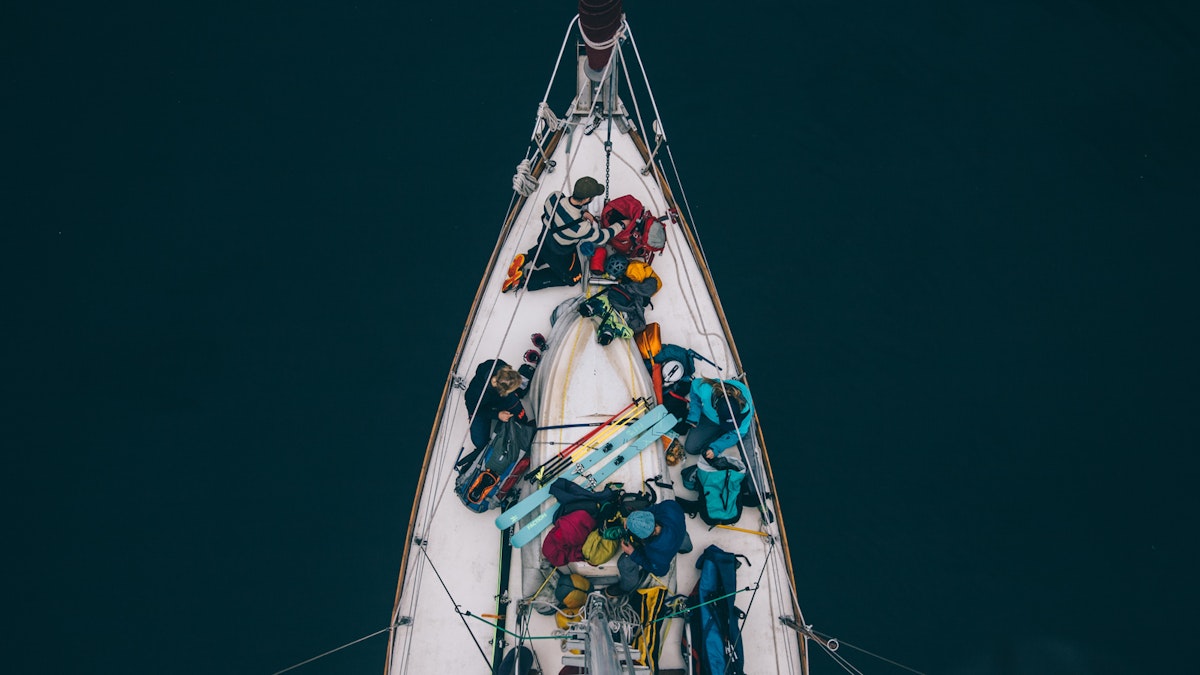


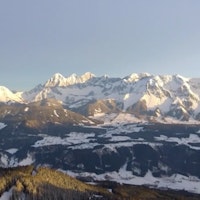
![[GIVEAWAY] Win a 4-Night Karma Campervan Rental and go Ski the Powder Highway](https://www.datocms-assets.com/163516/1767816935-copy-of-dji_0608-1.jpg?w=200&h=200&fit=crop)

![[GIVEAWAY] Win a Legendary Ski Trip with Icelantic's Road to the Rocks](https://www.datocms-assets.com/163516/1765233064-r2r26_freeskier_leaderboard1.jpg?auto=format&w=400&h=300&fit=crop&crop=faces,entropy)


![[GIVEAWAY] Win a 4-Night Karma Campervan Rental and go Ski the Powder Highway](https://www.datocms-assets.com/163516/1767816935-copy-of-dji_0608-1.jpg?auto=format&w=400&h=300&fit=crop&crop=faces,entropy)

